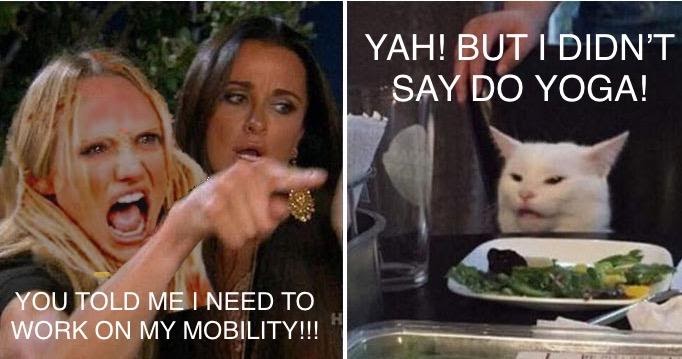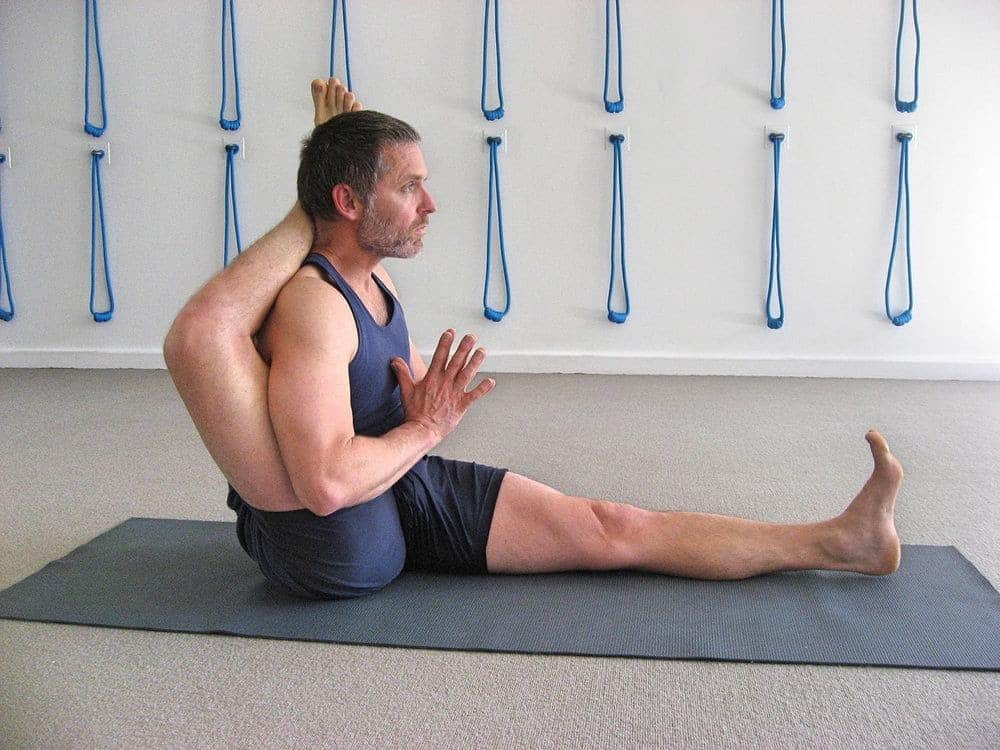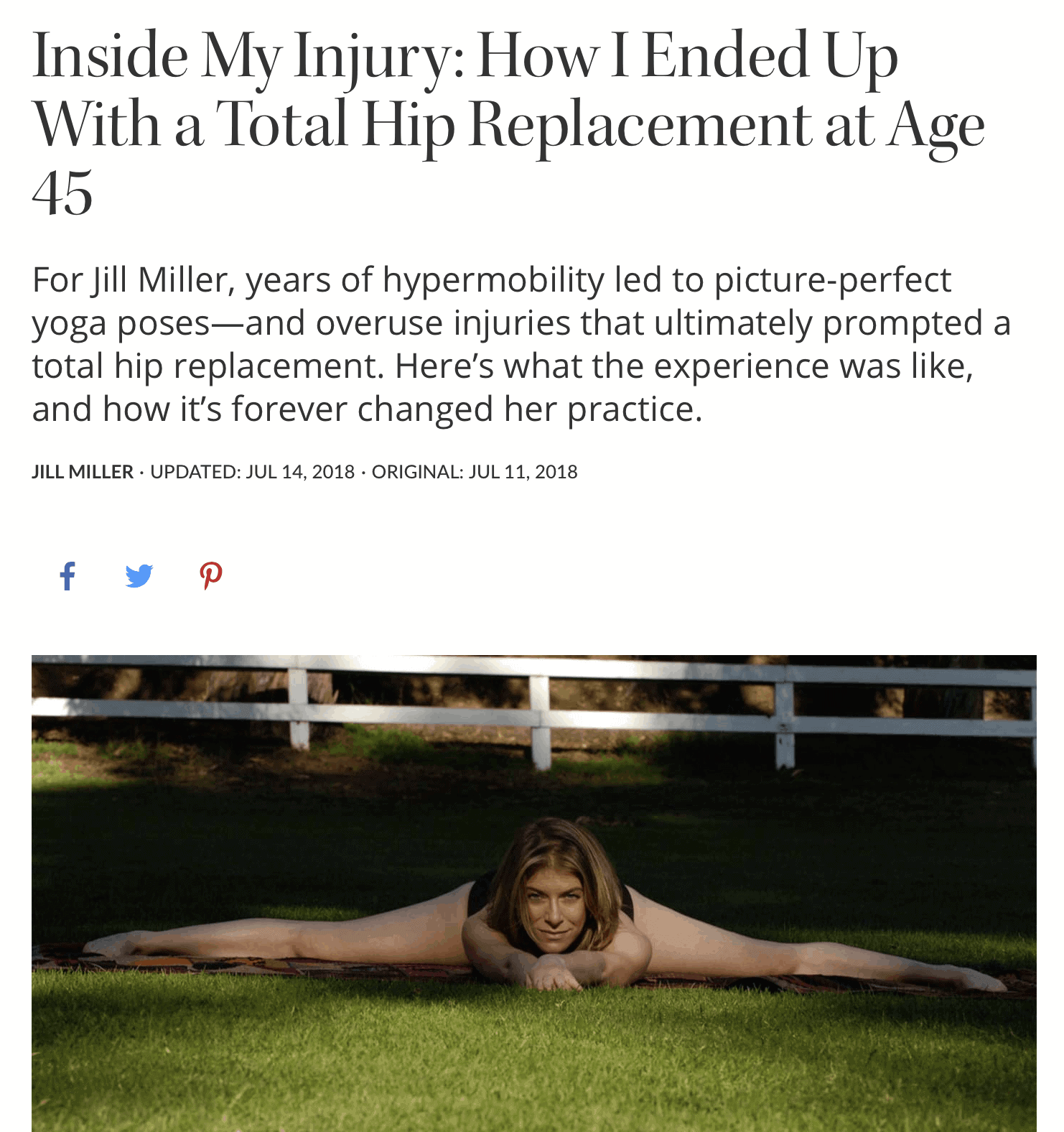Why Mobility Is Better Than Stretching
As a collective, we have become much more adept and informed about how to take care of ourselves. How can we not? We are fortunate to have access to the most innovative information through a conglomerate of industry-leading sources here at The Ready State. Want to simplify nutrition? Take the 800-gram challenge and don’t eat cookies before bed. What about sleep? Such a hot topic these days and here’s how to optimize it. Have a hot and inflamed joint? Don’t use ice, unless of course, you’re seeking the real power of cold therapy.
But somehow, with all of the information that is right in the palm of our hands, there’s still quite a number of us out there that believe stretching or Yoga is the same as Mobility.
SPOILER ALERT WARNING: It certainly is Not!
So, if I haven’t totally turned you off yet, give me more time as I channel my inner Ricky Gervais and give you my reasons why Mobility is Better than Stretching (aka – Yoga).

Mobility mo·bil·i·ty | \ mō-ˈbi-lə-tē
The ability to move into normative end range positions and actively engage the surrounding muscles to stabilize and generate force throughout a desired motion(s).
By definition, mobility is the ability to move into normative end range positions and actively engage the surrounding muscles to stabilize and generate force throughout a desired motion.
So what does this mean? It means that there is a standardized expectation of organized positions that we as humans should be able to competently move in and out of.
The most common misconception about mobility is that it solely is an expression of flexibility and range of motion. However, it is also made up of motor control or skill and this is important to understand because this intimately ties in the brain to the production of quality movement.
Here’s an example:
If you are having difficulty getting into the bottom of a squat because you can’t flex your hip at least 120°, the limiting factor might be stiff/shortened tissues. So what do you do? Maybe you stretch or get some tissue work done and voila, 120° of hip flexion. But when you attempt to squat with your new-found hip ROM, you’re unable to maintain an organized trunk, straight feet and generate power. So was the mission accomplished?
No, because there’s something fundamentally wrong with both of these scenarios. The latter is a strategy or movement compensation for a lack of motor control or technique – the trunk is disorganized, muscles aren’t on tension. Whereas the former is incomplete because of the inability to touch normative end range due to a restriction in the length of the soft tissue. If there was a demand to generate force in both of these scenarios, there’s a high chance that it wouldn’t be very strong, efficient or athletic. So first things first, mobility is just not about stretching or flexibility. Mobility is a combination of ROM and expression of skilled movement.
YOGA CREATES HYPERMOBILITY

If you were to take a poll, the gen-pop would likely tell you that Yoga is a series of stretches taught by Lululemon wearing hippies that smell of essential oils. While some of this may indeed be true, yoga has become fundamentally flawed as its popularity has grown.
As it turns out, yoga Jedi – B.K.S. Iyengar, was onto something when he said:
“Action is movement with intelligence. The world is filled with movement. What the world needs is more conscious movement, more action.”
Action is movement with intelligence …. (insert brain exploding emoji here), sounds a lot like the definition of Mobility. The problem with mainstream and modern-day yoga is that there is less conscious movement with more of an emphasis on deep poses and prolonged stretching. Without conscious movement, we lose the ability to regulate and have that conversation with our body to maintain our normative end range positions and that contributes to the development of hypermobile joints and unstable athletes.
CREEP: IT’S NOT JUST AN AWESOME 90’s SONG
When stretches are repeatedly held for extended periods of time it leads to a phenomenon called creep. Creep is where fascia and other tissue lengthen when it is subjected to a constant tension load resulting in less resistance when another load is applied (AKA – static stretching or prolonged poses). Simply put, this is the way our tissues make a physical adaptation to consistent stress.
If you’re wondering whether this is a good or bad thing. The answer is: yes.
If you’re mobilizing to crack the rust off your ankles with active feet and knee over foot, or keeping your butt engaged during Couch stretch to reduce over-extending your spine, then it’s a good thing.
But if you’re slouching and rounding your back while sitting in a chair or applying constant tension by hanging on passive structures of the hip in Pigeon pose (even though you have enough rotation), this can cause excessive and permanent changes in the extensibility of ligaments and tendons, resulting in a loss of proprioception, which is our perception of where our limbs and joints are positioned in space.
Not only does an increase or excess of creep result in a loss of proprioception. Hypermobility begets stability. Creep has also been found to decrease and delay reflexive force generation of muscles and that further affects the stability of joints. As a result, we end up with an unstable body (or noodles as Kelly would say) and inefficient movement patterns.

Anatomy and fascial nerd, founder of Tune Up Fitness and author of The Roll Model – Jill Miller, is a real-life case study. In her article in Yoga Journal, she shared her journey about how her relationship with yoga and pursuit of poses ultimately lead to irreversible hip degeneration and hip replacement surgery due to years of chronically straining the passive structures (capsule and ligaments) of the hip.
THE CHERRY ON TOP

If I have not been able to sway you yet, then I’ll just say, “Yoga just takes too damn long.”
As a business owner with a wife, 3 kids, and a dog, I don’t have an extra daily 60 to 90 minutes of free time in my schedule to Yoga flow. I’ve found mobility work to be a much more efficient use of my time and it also allows me to pinpoint the more specific and individual limitations that I have (the list is looooong). From personal experience, I have also been able to help the people I work with make more dramatic inter-session changes in their individual limitations than weeks of yoga or stretching ever did.
In summary, Mobility is an active practice, whereas Yoga is a passive practice. The similarity with both of these is the purpose. What a passive practice lacks is the intent. That intent connects our brain to our movements and that connection transfers into our sport, job, activity or life.
So the take home message here is not that Yoga is bad for you. There are so many health benefits and lessons that we can learn from it. Let’s just be a little less creepy about how we go about our movement practices.
Learn more about our expert led training courses including Movement & Mobility 101 and Movement & Mobility 102.


















TRS Virtual Mobility Coach
Guided mobilization videos customized for your body and lifestyle.
FREE 7-Day Trial